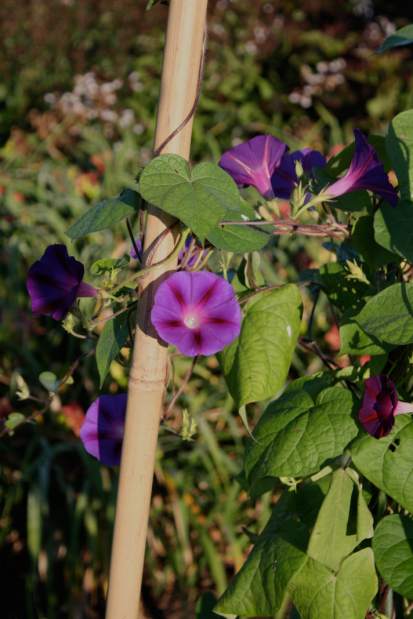https://archive.triblive.com/news/garden-qa-be-patient-with-morning-glories/
Garden Q&A: Be patient with morning glories

Jessica Walliser
Morning glories take from 80 to 100 days to bloom.
Question: In the spring, I purchased three morning glory plants from a local greenhouse. I planted them at three separate trellises. They have grown and grown, but not one of the plants has any flowers! What happened?
Answer: Morning glories ( Ipomoea tricolor) are terrific annual vines that are perfect for covering trellises, arbors and fences. They grow quickly, and their curling tendrils can easily wrap around support structures without assistance from the resident gardener. As you've discovered, they have a downside, however, and it's the number of days required for the plant to reach maturity.
Most varieties of morning glories take between 80 and 100 days to reach an age at which they can produce flowers. That means if you sow seeds directly into the garden on May 15 (the suggested outdoor planting date, as morning glories are not frost-tolerant), they won't come into flower until mid-August at the earliest. Some varieties might take even longer.
One way to encourage earlier blooms is to start the seeds indoors, under grow lights, about four to six weeks before planting them outside in mid-May. Doing so will bring flowers by mid-July. If you start morning glories from seed in the future, be sure to soak the seeds in warm water for 24 hours to help soften the seed coat before planting. Once you have morning glory vines established, chances are they'll return each year through natural seed drop.
That being said, if you purchased the started plants from a nursery in late April or early May, they should be in bloom by now. If they fail to bloom by the 100-day mark, it may be because of a nutrient imbalance in your soil.
I suggest you have your soil tested for nutrient deficiencies and excesses. If there is too much nitrogen in your soil, it can result in a lot of green shoot growth at the expense of flower production.
If the test results show a phosphorus deficiency, you'll want to add some bonemeal to the planting site. Phosphorous helps support flower production.
Horticulturist Jessica Walliser co-hosts “The Organic Gardeners” at 7 a.m. Sundays on KDKA Radio. She is the author of several gardening books, including “Grow Organic” and “Good Bug, Bad Bug.” Her website is www.jessicawalliser.com.
Send your gardening or landscaping questions to tribliving@tribweb.com or The Good Earth, 503 Martindale St., 3rd Floor, D.L. Clark Building, Pittsburgh, PA 15212.
Copyright ©2025— Trib Total Media, LLC (TribLIVE.com)
